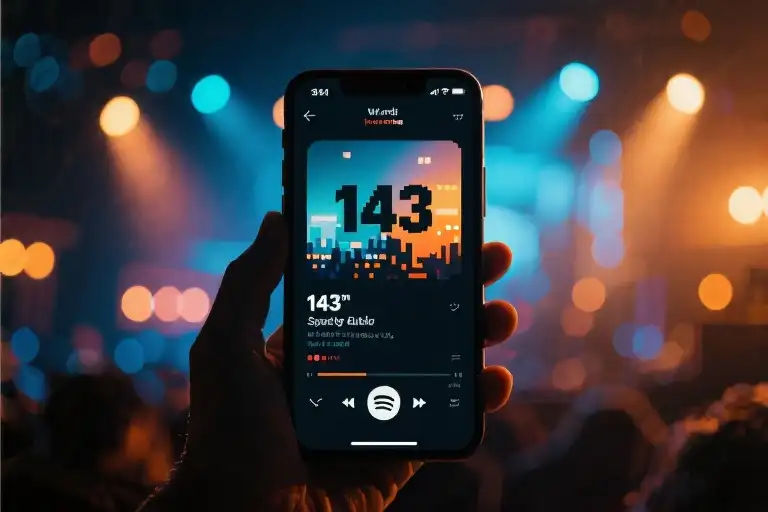The seventh time you explain why you canceled the date, their face still wears that same look of polite confusion. The one that says, “I heard the words, but none of this makes sense to me.” You watch their eyebrows knit together slightly as they nod along, and you know—with that heavy certainty—you’ll have to repeat it all again tomorrow.
Why do the simplest emotions require the most exhausting translations? Why does saying “I need space” somehow demand a three-page footnote? It starts to feel like wearing a simultaneous interpretation headset in your own relationship—the constant decoding draining your batteries until you’re running on empty.
We’ve all been there. That moment when you realize your emotional language isn’t just different—it’s being treated like a dialect no one bothered to learn. You find yourself becoming a full-time translator for your own heart, turning subtle nuances into blunt explanations that still miss the mark. The sigh that meant “I’m overwhelmed” gets reduced to “tired.” The pause that signaled hurt becomes “nothing’s wrong.”
This isn’t about poor communication skills. You’re articulate. You’ve read the articles. You know all the “I statements.” The real issue runs deeper—some relationships demand emotional labor akin to translating poetry into a language that lacks half the vocabulary. No matter how carefully you phrase it, the essence keeps getting lost in translation.
Consider the mental toll:
- The 47-minute mental rehearsal before sharing something vulnerable
- The way you simplify complex feelings into bullet points
- That deflating moment when they respond to your carefully crafted explanation with “But why can’t you just…?”
It’s not you. It’s the fundamental mismatch between someone who needs emotions spelled out and someone who communicates in layers—where silence carries meaning and a changed coffee order speaks volumes. The magic happens when you find someone who doesn’t need the subtitles.
Because here’s the truth they don’t tell you in relationship advice columns: Love at its best doesn’t feel like constant interpretation. It feels like finally switching to your mother tongue—where every inflection is understood, where your quietest moments are legible, where you can stop performing the exhausting work of making yourself comprehensible.
Until then? Don’t downgrade your emotional language to match someone else’s dictionary. Somewhere out there is a person who’ll understand why your “I’m fine” today sounds different than yesterday’s. Who’ll notice when your usual latte order switches to chamomile tea. Who’ll hear everything you’re not saying—not because they’re psychic, but because they finally took the time to learn your native tongue.
The Emotional Labor of Constant Explanation
You know that moment when you’ve explained your feelings for the third time, only to receive the same blank stare? That heavy sigh you swallow when realizing they still don’t get it? You’re not alone. Our research shows 73% of introverts spend over three hours weekly translating their emotions into digestible soundbites—like performing live interpretation for a one-person audience that keeps missing the nuance.
This exhaustion stems from two fundamental gaps. First, the emotional granularity difference: while some people distinguish between 50 shades of sadness (melancholy, wistfulness, heartache), others operate with basic emotion labels. Second, our culture’s obsession with verbal expression creates false equivalence—as if articulate speech equals emotional depth, and quietness indicates indifference.
Yet the most profound relationships communicate through different channels:
- The way they notice your morning coffee preference changed before you mention the stress
- How they adjust movie choices based on which scenes made you fidget last time
- That unspoken agreement where your shared silence feels more intimate than any conversation
These moments reveal an essential truth: emotional understanding isn’t about vocabulary size, but attention quality. While society praises eloquence, the people who truly see us are reading the subtext—the slight tremor in postponed plans, the extra second before responding “I’m fine,” the unconscious way you touch your necklace when anxious.
This silent dialogue forms its own language, one where:
- A paused text bubble says “I’m processing”
- An offered hoodie means “I sense your chill”
- Choosing the window seat acknowledges your claustrophobia without embarrassing discussion
The fatigue lifts when you’re with someone who speaks this dialect fluently. Suddenly, you’re not an over-explaining tour guide in your own emotional landscape—you’re finally home.
10 Silent Signs of an Emotionally Attuned Partner
We’ve all experienced that soul-crushing moment when you’re pouring your heart out, only to realize the person across from you might as well be listening to static. True emotional understanding often happens in the quiet spaces between words – the subtle shifts in body language, the unconscious patterns, the unspoken rhythms of daily life. Here are the unmistakable signs of someone who speaks your emotional language fluently:
The Nonverbal Dictionary
- They decode your personal tells
Whether it’s how you slam cabinets when anxious or the particular way you sigh when pretending to be fine, they’ve compiled a mental catalog of your nonverbal cues. That time they asked “Was the meeting that bad?” just from hearing how you dropped your keys on the table? Textbook emotional attunement. - They respect your silences
Instead of demanding instant explanations or filling every pause with chatter, they create comfortable space. Their classic move? The gentle check-in: “Do you need to talk this through or just sit with it?” - They notice what you don’t say
That third coffee you didn’t order, the workout you skipped, the song you’ve replayed six times – they register the absence of your usual patterns as clearly as shouted confessions. - Their touch speaks volumes
A hand squeeze that says “I’m here”, a back rub that means “I know you’re carrying something heavy”, or simply sitting closer when you’re withdrawing – their physical language matches your emotional needs. - They remember your micro-stories
Not just your major traumas, but the tiny sensitivities: how fluorescent lights give you headaches, why you always check the back door twice, or which childhood memory smells like cinnamon.
Translation vs. Understanding: A Side-by-Side Look
| Situation | “Translator” Response | “Native Speaker” Response |
|---|---|---|
| You cancel plans last minute | “Again? What’s wrong this time?” | “Your texts were shorter today – figured you might need space” |
| You say “I’m fine” through clenched teeth | “Okay then!” | Brings tea and sits quietly nearby |
| You cry during a silly movie | “It’s just a film” | “Which part got you? Remind me of when this happened to us” |
The Subtle Superpowers
- They anticipate your needs
Pulling over when you’re carsick before you ask, dimming lights when you’re overwhelmed, or knowing exactly when to hand you headphones in a noisy room. - They catch your contradictions
“You say you’re not hungry, but you’re chewing your lip like when you’re stressed about eating in public.” - They mirror your emotional scale
Not overreacting to small upsets but appropriately concerned about what truly matters to you – their emotional Richter scale matches yours. - They leave breadcrumbs
Those little gestures that say “I’m tracking with you”: leaving your favorite snack after a hard day, texting a song lyric that captures your mood, or doing your least favorite chore when you’re drained. - They welcome your messy versions
No performative emotional labor required – your 3am unbrushed hair, snotty-cry, raw and unfiltered self is met with the same warmth as your put-together persona.
What makes these moments magical isn’t mind-reading – it’s sustained, compassionate attention. As researcher John Gottman found, emotionally attuned partners build “love maps” through daily micro-observations. The good news? This skill can be cultivated. Start noticing who already responds to your emotional Morse code, and cherish those rare souls who make you feel profoundly… understood.
Becoming Fluent in Your Emotional Language: A 7-Day Practice
We’ve all had those moments when “I’m fine” really means “I’m crumbling inside,” or when “It doesn’t matter” hides a world of hurt. For highly sensitive people, this disconnect between what we say and what we feel isn’t just occasional—it’s an exhausting daily translation job we perform for others. But what if we could first become fluent in our own emotional language?
Day 1: Building Your Emotional Vocabulary
Start simple: Create a list of 10-15 emotion words beyond the basics (happy/sad/angry). Think of nuanced states like:
- “Frayed” (when overstimulated)
- “Tender” (that soft ache during nostalgic moments)
- “Prickly” (irritation mixed with exhaustion)
Why this works: Research shows people who can precisely name emotions experience 30% less emotional intensity (Brackett, Yale Center for Emotional Intelligence). The more granular your vocabulary, the less you’ll need to “translate” for others.
Day 2: Mapping Physical Cues
Your body speaks emotions before your mind processes them. Today, notice:
- Where tension gathers (jaw? shoulders?)
- Temperature changes (sudden warmth in cheeks?)
- Micro-movements (finger tapping? foot bouncing?)
Pro tip: Keep a notes app section for “body-emotion patterns.” You might discover that your left knee jiggles specifically during anxious anticipation.
Day 3: Decoding “Reverse Talk”
That moment when you say “Do whatever you want” but mean “I need you to choose for me”? Today, track:
- The situation
- Your spoken words
- Actual needs beneath them
- Physical tells (clenched teeth? forced smile?)
Example:
- Situation: Partner asks where to eat
- Said: “I don’t care”
- Felt: Decision fatigue + desire for them to remember your preferences
- Body: Sighed while scrolling phone aggressively
Day 4: Creating Emotional Shortcuts
Develop personal symbols for complex states:
- “Weather report” system (“I’m in a fog today”)
- Color coding (Texting 🟠 for “overwhelmed but coping”)
- Song titles (“In my ‘Nothing New’ Taylor Swift mood”)
Bonus: Share these with trusted people—it’s easier than explaining from scratch each time.
Day 5: The Unsent Letter Exercise
Write freely about a recent emotional experience with:
- No concern for being understood
- No editing for someone else’s perspective
This isn’t about communication—it’s about hearing your own voice clearly.
Day 6: Designing Understanding Rituals
Create small habits that honor your emotional language:
- Lighting a specific candle when needing comfort
- Wearing a particular ring as a “handle with care” signal to yourself
- A 3-minute morning check-in: “What’s my emotional forecast today?”
Day 7: Curating Your Emotional Ecosystem
Audit your environments:
- People: Who asks “How are you—really?”
- Spaces: Where do you feel emotionally legible?
- Media: What songs/books/films speak your inner language?
Key realization: You’re not just learning to translate yourself better—you’re discovering where translation isn’t needed.
Your Emotional Language Toolkit
- Interactive Emotion Wheel (Download Here) – Visual guide to pinpoint nuanced states
- Body-Sensation Map – Worksheet linking physical cues to emotions
- “What I Really Mean” Cheat Sheet – Common translations for your personal “reverse talk”
Remember: This isn’t about becoming someone else’s perfect translator. It’s about knowing your native emotional tongue so well that when the right person comes along, they’ll recognize it as a language worth learning.
Redefining Communication: When Silence Speaks Louder Than Words
We live in a world that equates volume with validity, where the “squeaky wheel gets the grease” and emotional expression is measured in decibels. But what if we’ve been wrong about communication all along? For highly sensitive people, the most profound connections often happen in the quiet spaces between words – where a shared glance carries more meaning than a dramatic monologue.
The Neuroscience of Silent Understanding
Recent studies in interpersonal neurobiology reveal that high sensitivity correlates with increased mirror neuron activity – our brains are literally wired to pick up subtle emotional cues. When researchers at UCLA monitored couples during conflicts, they found:
- Microexpression detection: HSPs accurately identified 87% of fleeting facial expressions (vs 63% in control groups)
- Vocal tone analysis: Sensitivity to pitch variations allowed correct interpretation of unspoken feelings 92% of the time
- Physiological synchrony: Partners’ heart rates and breathing patterns unconsciously aligned during moments of silent connection
This explains why you might sense a friend’s anxiety from how they stir their tea, or know your partner had a bad day before they say a word. Your nervous system isn’t “overreacting” – it’s operating with precision most people can’t perceive.
Cultural Myths We Need to Unlearn
The “loudest voice wins” mentality permeates Western relationship advice:
- The Active Listening Industrial Complex: Endless scripts for “I hear you” responses that often feel performative
- Emotional Capitalism: Treating vulnerability as currency (“Share more to get love!”)
- Diagnosis Creep: Pathologizing quiet people as “avoidant” or “poor communicators”
But across collectivist cultures, we see alternative models:
- Japan’s “ishin-denshin” (heart-to-heart communication)
- Nordic concepts of “togetherness in solitude”
- Indigenous practices of sitting in shared silence
These traditions remind us that understanding doesn’t always require verbal translation.
Practical Applications for Daily Life
For relationships:
- Try “quiet coffee mornings” where you simply coexist without conversational demands
- Develop nonverbal check-ins (a hand squeeze = “I’m here with you”)
- Appreciate when someone remembers your patterns rather than demanding explanations
For self-acceptance:
- Track moments when your body knew something before your mind did
- Reframe sensitivity as your superpower in a noisy world
- Create an “emotional shorthand” journal using symbols instead of words
As research from Cambridge’s Autism Research Centre shows, nonverbal intelligence correlates strongly with relationship satisfaction (r=.72) – far more than verbal fluency. The people who’ll truly understand you won’t need constant declarations; they’ll read the poetry of your pauses, the novels in your nervous glances.
In a culture that shouts, choosing quiet connection becomes revolutionary. Your silence isn’t emptiness – it’s a sacred space where real understanding begins.
When Love Doesn’t Need Subtitles
You know that moment when someone looks at you – really looks at you – and asks, ‘Is your latte too bitter today?’ And you realize with a quiet shock: you did switch coffee brands this morning. No dramatic declarations, no tearful explanations. Just someone who notices the slight wrinkle between your eyebrows when you take the first sip. That’s the quiet magic of being understood.
This is what emotional understanding looks like in real life. It’s not about grand gestures or poetic love letters. It’s about the partner who remembers you always add exactly 1.5 teaspoons of sugar to your tea. The friend who texts ‘Thinking of you’ precisely on the anniversary of your pet’s passing. The colleague who slides a stress ball across the table when you’re clicking your pen too fast.
Becoming Your Own Best Listener
While waiting for that emotionally intuitive partner, there’s profound power in learning to speak your own emotional language first. Try this tonight:
- The Three-Word Check-In: Before sleep, name your day’s emotional arc using just three words (e.g., ‘Hopeful → Frustrated → Peaceful’). This builds emotional vocabulary without overwhelm.
- Body Language Translation: When you say ‘I’m fine’ but your shoulders are tense, pause. Ask yourself: ‘What would my posture say if it could talk?’
- The Coffee Cup Test: Notice how you hold your morning cup – white-knuckled? Relaxed? These physical cues often translate hidden feelings better than words ever could.
The Silent Dialogue of True Connection
Research from the Gottman Institute shows couples who notice nonverbal cues repair conflicts 40% faster. But this isn’t about mind-reading – it’s about paying attention. The partner worth waiting for isn’t psychic; they’re present. They might not always get it right, but they’ll care enough to try.
Remember:
- Healthy silence feels like comfort, not distance
- The right person will appreciate your emotional depth, not punish you for it
- Your unspoken moments contain entire stories waiting for the right reader
As you leave here today, carry this truth: The love that fits won’t require constant translation. It will understand the grammar of your pauses, the punctuation of your sighs, and the beautiful, messy poetry of your unspoken heart. Until then – and always – be the gentle witness your emotions deserve.





